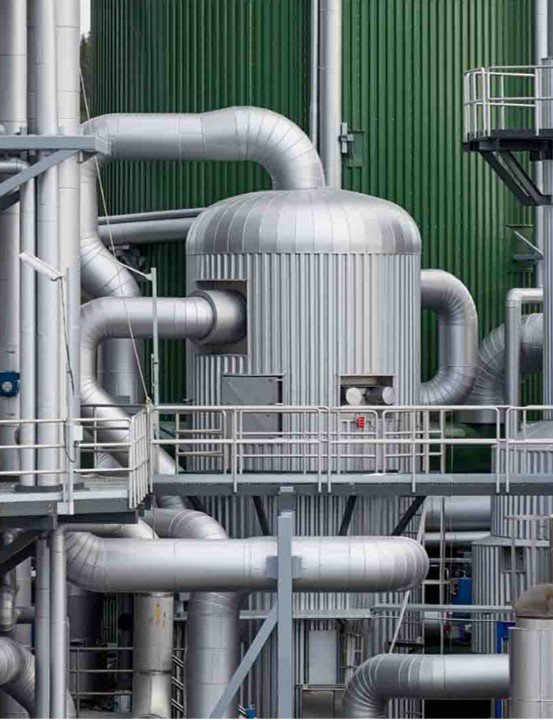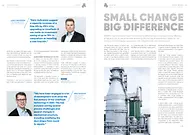Benefits and paybacks:
Due to the increased efficiencies and energy saved using secondary steam, the return on investment on the DEvap is very short, just 1 – 2 years. Lasse-Matti Björkstedt, Development Manager, Evaporation Plant, says, “The benefit of the digester evaporator is that the condensate of medium pressure steam is collected, not condensed on the chips and black liquor, and can be sent back to the boiler feed water system. This condensate has significant value in terms of feed water preheating and demineralization costs, which, added to the reduction in steam consumption in the evaporation plant, means major pay backs.”
For a mill the size of Metsä Fibre’s Äänekoski bioproduct mill, the steam flow to the top of the digester is around 15 kg/s. If this steam is generated via a DEvap instead a direct MP-steam, the water flow in weak black liquor is correspondingly lower, resulting in 15 kg/s less water to be evaporated. Also the steam condensate can be returned to the power plant, as the direct steam input is replaced with a secondary vapor from the DEvap. In case of a direct steam feed, the lost amount of steam condensate would be replaced with demineralized water to maintain the required amount of water/steam in the power plant circulation.
A steam economy of a modern 7-effect evaporation plant is normally about 6 tonnes of evaporation per 1 tonne of steam, so the LP steam saving in the evaporation is 15 kg/s ÷ 6 = 2.5 kg/s.
The DEvap uses around 1 t/t steam for evaporation and thus the returned condensate amount is about the same as the evaporation, in this case 15 kg/s. The condensate from DEvap is at the saturation temperature of MP steam, which is normally around 170 °C. The saving here comes from the temperature difference of the returned condensate (in the case of a DEvap) and the demineralized water (in the case of direct steam feed). The demineralized water temperature is normally around 40 °C. This heat difference is balanced in a feed water tank, where the mixture of returning condensates and demineralized water is heated to a temperature required for the boiler, so returning the hot condensates instead of cold demineralized water will save LP steam flow to the feed water tank.
The saved heating power in the feed water tank is about 15 kg/s × 4.19 kJ/kg°K (170 °C − 40 °C) = 8,170 kW.
The corresponding steam saving can be estimated by dividing the heat power with an approximate condensation heat of the steam: 8,170 kW ÷ 2,150 kJ/kg = 3.8 kg/s.





